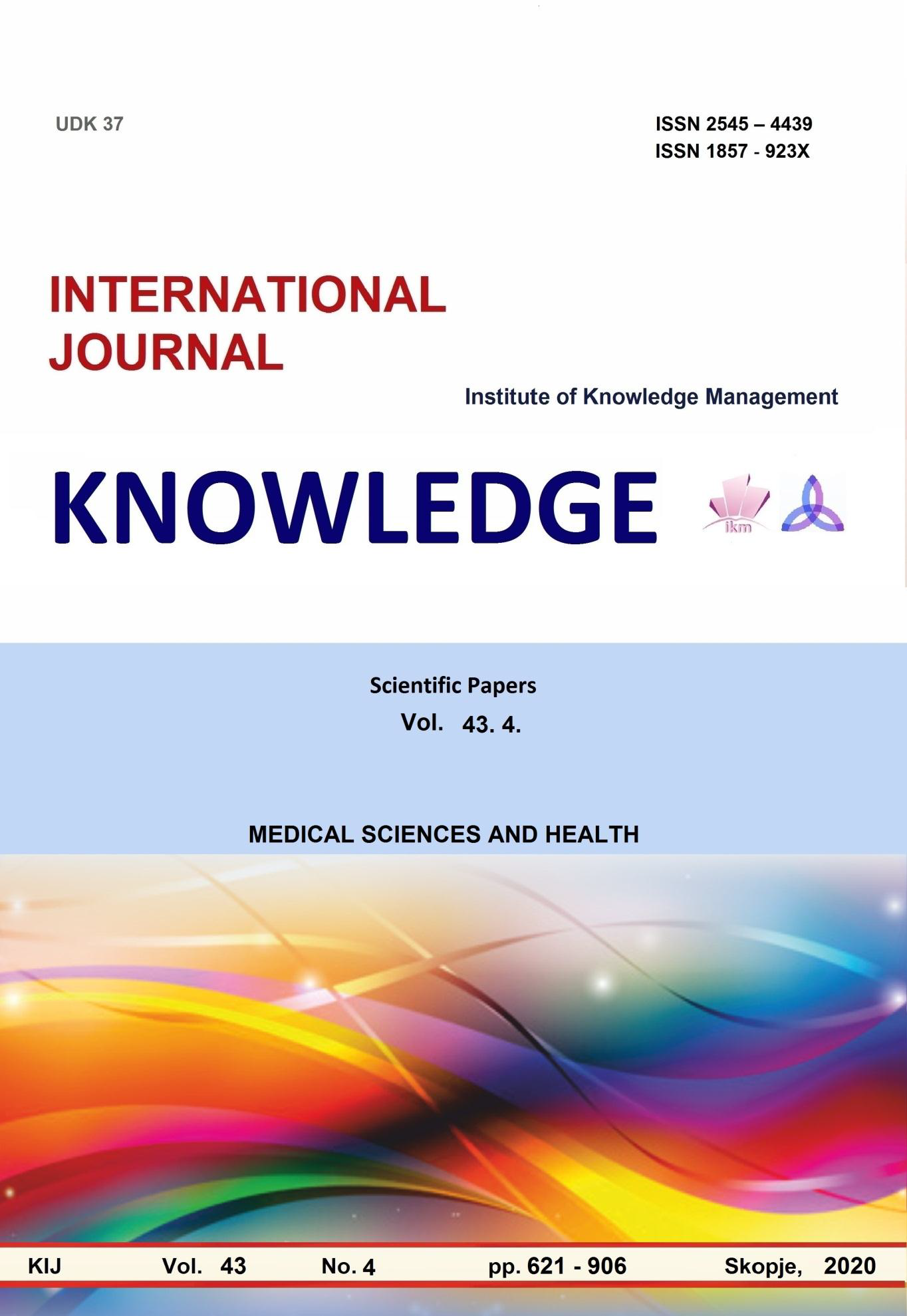ВИРУСНИ ОНКОПРОТЕИНИ Е6 И Е7 КАЈ ЖЕНИ СО СКВАМОЗНИ ИНТРАЕПИТЕЛНИ ЛЕЗИИ И СКВАМОЗЕН ИНВАЗИВЕН КАРЦИНОМ НА ГРЛОТО НА МАТКАТА
VIRAL ONCOPROTEINS E6 AND E7 IN WOMEN WITH AND WITHOUT SQUAMOUS INTRAEPITHELIAL LESIONS AND SQUAMOUS INVASIVE CERVICAL CANCER
Author(s): Drage DabeskiSubject(s): Social Sciences
Published by: Scientific Institute of Management and Knowledge
Keywords: viral oncoproteins; E6; E7; squamous intraepithelial lesion; squamous invasive carcinoma; uterine cervix
Summary/Abstract: The two most important viral oncoproteins in the process of cervical carcinogenesis are E6 and E7. The study is a retrospective cohort study. Material is represented by 192 patients aged 20 to 59 years, divided into two groups: examined and control. The study group included 128 sexually active women with abnormal cervical cytological findings, ie Pap smear, which shows the presence of squamous intraepithelial lesion or squamous invasive cervical cancer. The control group included 64 sexually active women with normal cervical cytological findings, ie PAP test. The study did not include: pregnant women, women with previous cervical surgery (conization, carbon dioxide laser vaporization, and total hysterectomy), with previous abnormal cytological and histopathological findings of the cervix, and women with menstrual bleeding. The study did not include: pregnant women, women with previous cervical surgery (conization, carbon dioxide laser vaporization, and total hysterectomy), with previous abnormal cytological and histopathological findings of the cervix, and women with menstrual bleeding. HPV E6 / E7 mRNA infection was detected in 60.94% of patients in the study group. Analysis of the data showed an increase in HPV E6 / E7 HPV mRNA infection, in parallel with an increase in the histopathological degree of cervical lesion. The lowest percentage was in LSIL 9.76% (4/41), with an increase of 92.59% (50/54) in HSIL and 95.83% (23/24) in invasive squamous cell carcinoma (p˂0.05). Data analysis showed an association between the presence of viral oncoproteins E6 and E7 and the occurrence of squamous intraepithelial lesions and squamous invasive cervical cancer (p <0.05). HPV E6 / E7 mRNA infection was detected in two (3.12%) patients in the control group. Our study has shown that there is an association between viral oncoproteins E6 and E7 and squamous intraepithelial lesions and squamous invasive cervical cancer
Journal: Knowledge - International Journal
- Issue Year: 43/2020
- Issue No: 4
- Page Range: 741 - 749
- Page Count: 9
- Language: English, Macedonian

